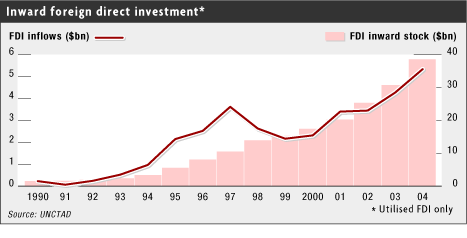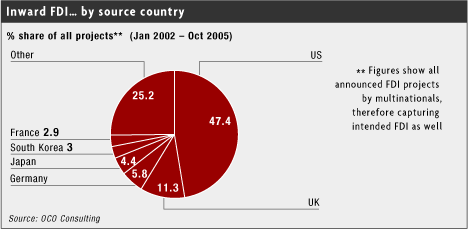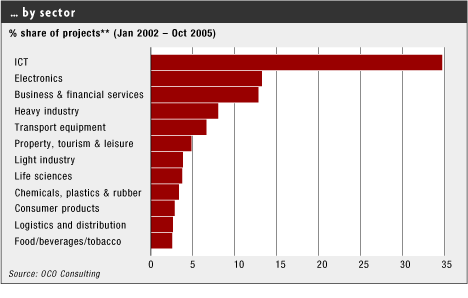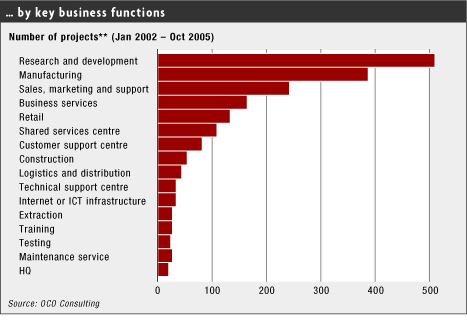ICICI: Timing and technology put bank ahead of the game
By Khozem Merchant
Published: January 25 2006 18:30
Earlier this month ICICI Bank unveiled Bollywood superstar Shah Rukh Khan as its global brand ambassador. Yet even without the endorsement of India’s most bankable actor, ICICI’s global ambitions have come into sharp focus in the past year.
In Canada, for example, two out of three customers clicking on to the bank’s online service are non-Indians, surprising Kundapur Vaman Kamath, the managing director who has led ICICI’s makeover from a slumbering project financier to India’s most aggressive consumer lender. “In Canada, we thought only Indians would click because they knew the brand,” he says.
The response in Canada, one of 11 countries in which ICICI has opened 19 branches since going global in September 2003, has helped the international unit break even in year-one of operations. The Mumbai-based bank’s international balance sheet has swelled to $5.4bn, contributing 12.5 per cent to total net income and the bottom line. In the financial year to March 2005, total income and profit were Rs128.26bn and Rs20.05bn respectively.
ICICI’s global foray is not the first such move by an Indian bank. In the 1990s, State Bank of India, Bank of Baroda and Bank of India, all government-owned lenders, expanded into the US or UK, where they built up sizeable income streams. But the experience was also painful. Bank of India ran up a large property exposure, took a big hit when UK house prices fell and struggled for several years to clean up its balance sheet. What makes ICICI’s foray different is that it has coincided with a strengthening of the Indian economy in general and the emergence of several factors in particular that have helped the bank achieve a competitive edge in overseas markets.
First, ICICI, which is about 74 per cent owned by foreign investors, launched just as Indian companies were exporting more or beginning to acquire assets overseas, triggering a demand for, say, offshore funding and a wider array of banking services from a familiar lender.
Second, the bank leveraged the “Indian outsourcing and cost benefit” to stunning effect. For example, it administers and processes the transactions of its global business in India, where lower technology and labour costs produce savings that contribute to a competitive pricing of products.
A third factor has been the wholesale adoption of technology, the critical infrastructure that has “given us the opportunity to scope, scale and change”, says Mr Kamath, a graduate of India’s most prestigious finishing school for managers, the Indian Institute of Management in Ahmedabad.
In the late 1990s, ICICI’s use of technology was not only limited; it had yet to appreciate the “strategic transformation” that technology could bring about in helping manage massive volumes of transactions and reach remote areas. “We said this was the time to take a call on technology,” he says. Today, technology is not only at the heart of “our differentiation” says Mr Kamath; the bank’s yearly technology operating expense per customer is 5 to 10 per cent of that of its global competitors. Mr Kamath says the savings from technology allow the bank to add 40 to 50 basis points on savings products “which is hugely attractive in markets where rates are 2.5 per cent to 4 per cent. The differential we trace back to technology which allows mass volumes of transactions, shorter cycles and a commoditisation of products. The result is customer value.”
The combination of these domestic advantages has been the platform on which the bank has targeted a core external market of customers with links to India as a first step and the wider population later on. For example, a strategic focus in the UK, where it has five branches, has been fee-based services such as remittances. ICICI felt this was overlooked by local lenders at a time when expatriate Indians were not only supporting families back home but stepping up their presence by buying homes there.
In the US, ICICI refined “delivery choices”, remitting funds directly from accounts via local clearing systems. Such innovations have helped it mop up between 10 and 15 per cent of the $25bn remitted to India each year. In addition, one-tenth of home loan customers are overseas, borrowing in rupees and repaying in euros, and generated with “scarcely any noise,” says Mr Kamath.
In January, ICICI expanded into Sri Lanka, adding to a branch presence in Canada, the UK and Hong Kong, with offshore centres in Bahrain and Singapore. Last year, a Russian bank was acquired for less than $5m “which should collapse the timeframe for our entry there,” says Bhargav DasGupta, who heads the global unit. Russia, like China, another large potential market, lays out a lengthy timeframe for foreign banks’ entry, and the hope is that a local asset in Moscow, now re-branded, will hasten the process. The Hong Kong branch, opened last year, will tap demand for trade based on a long-settled Indian community in the former British colony, as well as serve as a bridgehead into China. The bank has also formed alliances with, among others, Wells Fargo in the US and Lloyds TSB in the UK to gain wider distribution, holding down its costs.
Observers note that the pace of expansion overseas, and speedy growth within individual markets such as the UK, is pure ICICI. They cite the retail experience in India where, within a period of six years, ICICI, using aggressive margin-cutting offers, has become the market leader, with about one-third of the consumer loans market. One adviser to ICICI cautions that a bank adding 3m customers and growing at 40 per cent a year “must be careful about asset quality”, which hurt an earlier band of Indian banks going abroad.
Mr Kamath, who formed many of the ideas that would later revolutionise ICICI and Indian banking during a brief stint in Indonesia with the Asian Development Bank in the early 1990s, insists his global strategy is distinct in two ways from those Indian banks that were hurt with localised exposure in the UK and the US.
He says ICICI will rely on a “diverse set of funding options” such as local customer deposits and longer-term liabilities to build a wide portfolio of services. The second difference is “the direction of our lending, which is significantly towards Indian companies that we know well.
These are companies you are really banking on because of their history in India. That differentiates us from Indian banks that have gone out before and failed.” Given the relentless push for growth, Mr Kamath is sanguine about acquisitions as a strategy to achieve targets more quickly. He rules out “the transformational acquisition”, saying “domestic opportunity is enough and, anyway, there are still plenty of [other] things to do with our capital”. With four years to his retirement, he also has the time.



